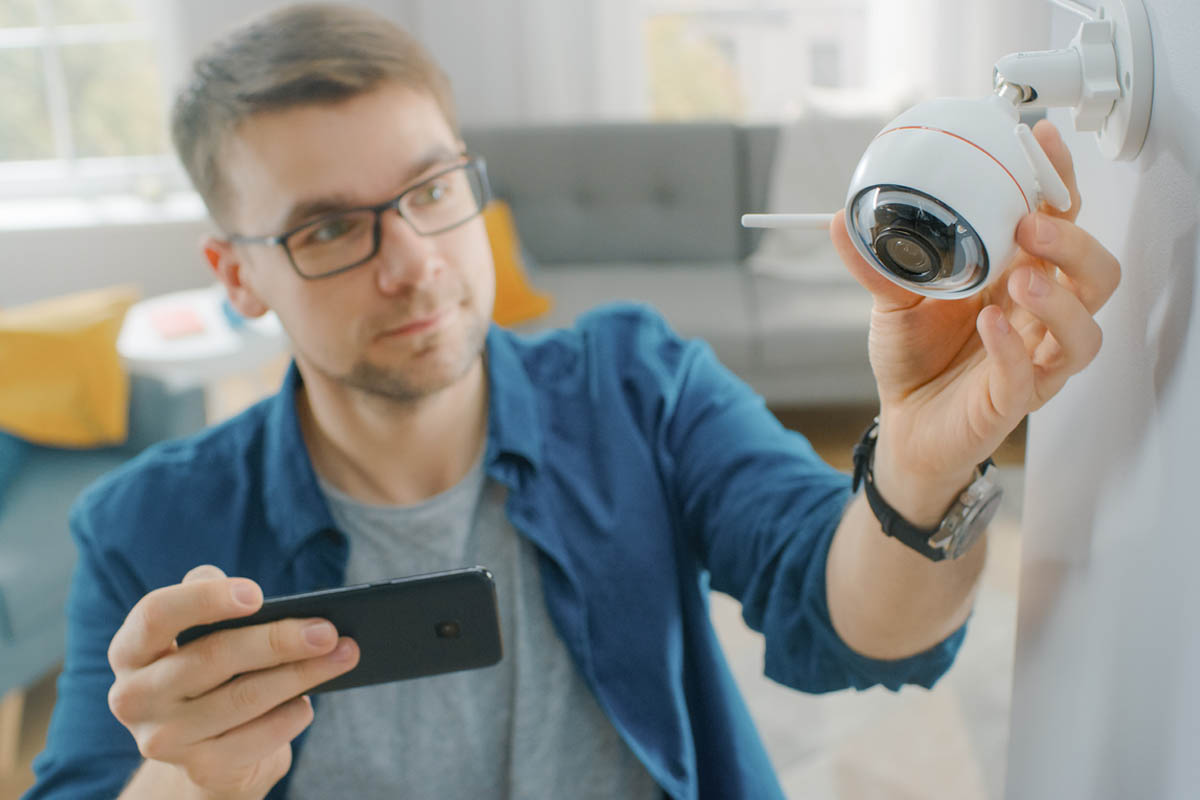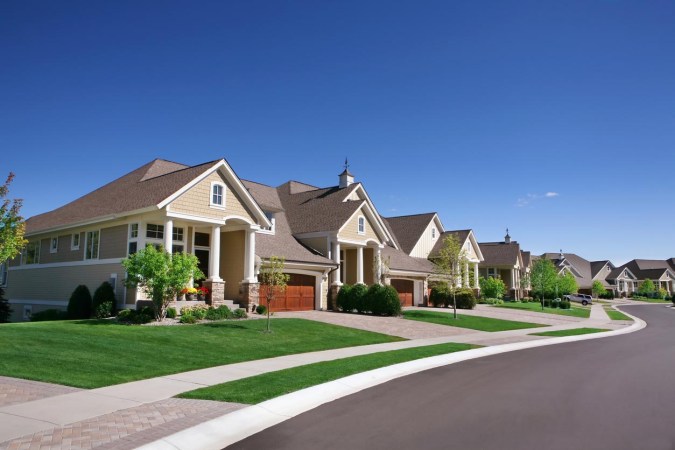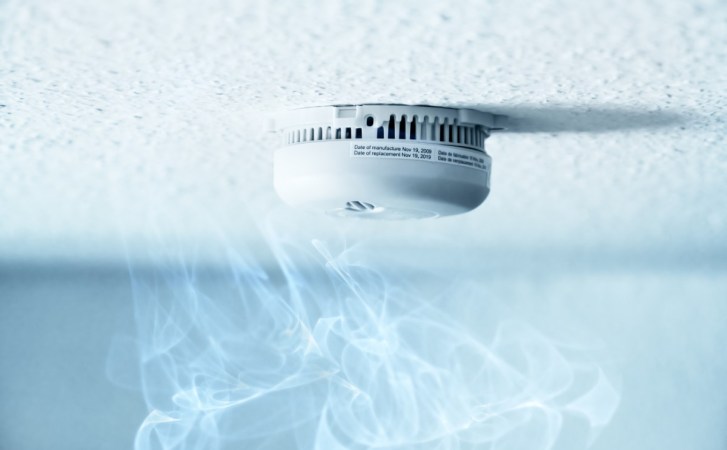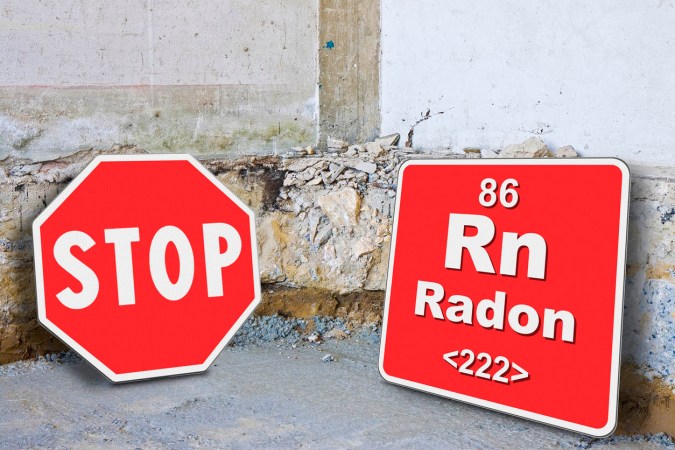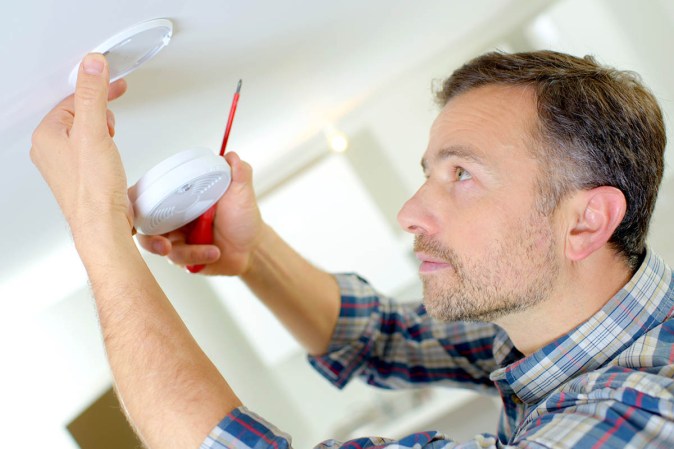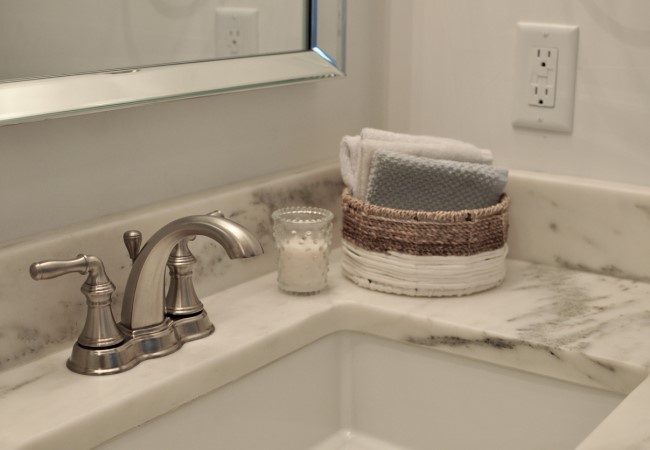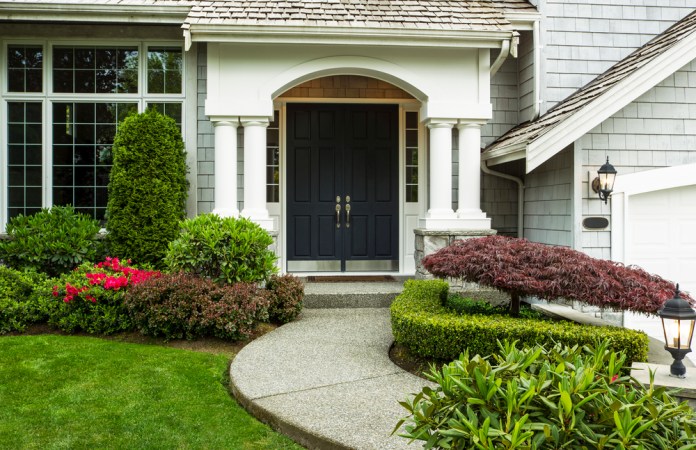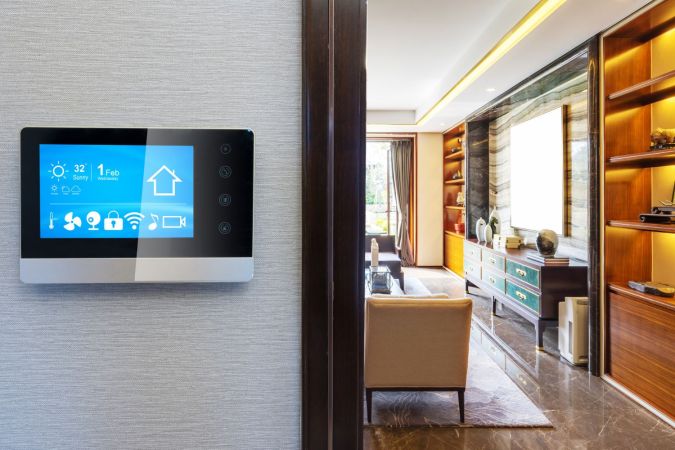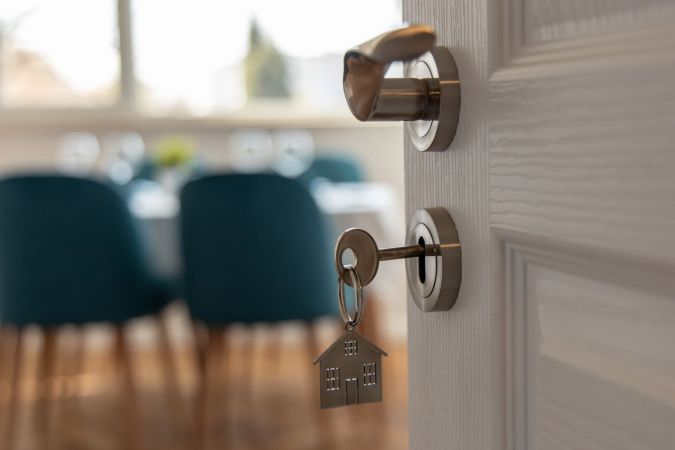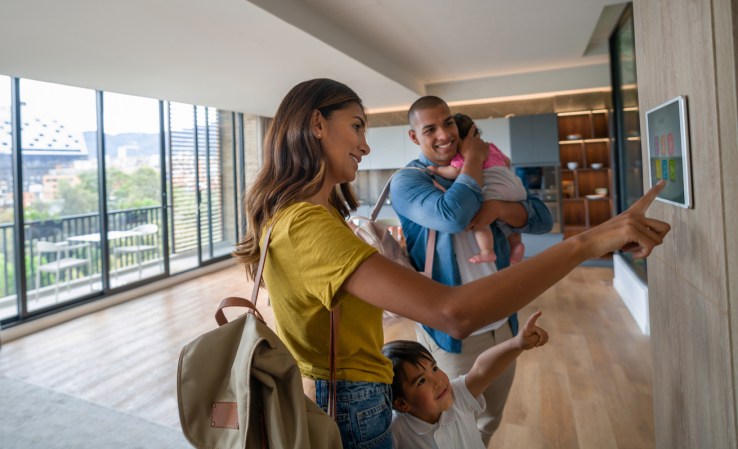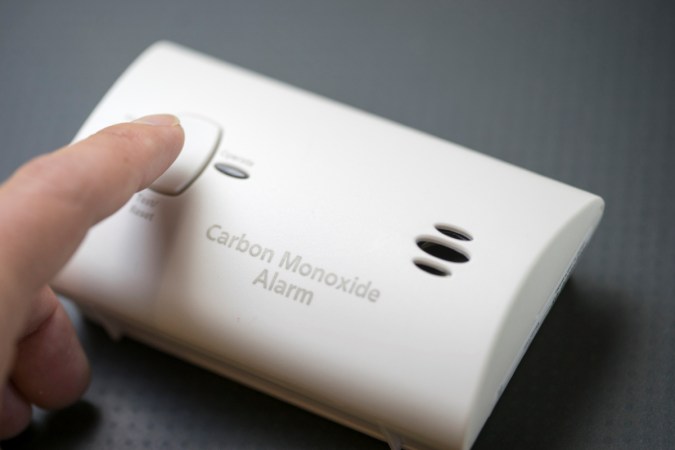We may earn revenue from the products available on this page and participate in affiliate programs. Learn More ›
Q: I’m interested in a home security system, but I’m not sure I want people in my home installing a lot of hardware or “listening in.” I keep hearing about systems that I can install myself. What is a DIY security system?
A: While a DIY security camera system may initially sound like a substitute for a “real” security system, nothing could be further from the truth. DIY systems offer a wide range of options that make it possible to match home security to your needs. They function similarly to traditional security systems; made up of sensors, alarms, and cameras, the hardware for the system will detect doors and windows opening and closing, unusual movement, fire, and other concerns, and will then provide an alert. Unlike standard security systems, however, DIY security systems require customers to install the equipment themselves, and they offer monitored or unmonitored options (so users can have alerts sent to their phones or purchase a contract for a home security company to monitor the system and alert authorities if there’s a problem). There are a number of benefits to the DIY route—the biggest being that it is possible to adjust the number of the system’s components as needed in addition to opting for a monitored or unmonitored system (and DIY options are just as effective as traditional systems and are among some of the best home security systems).
Need a home security system? SimpliSafe can help. With a comprehensive whole-house solution, you can be prepared for the unexpected. View SimpliSafe systems and prices.
DIY security systems require the purchaser to install the system themselves.
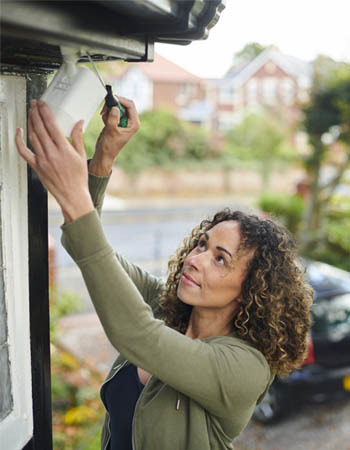
Home security system installation can account for a significant portion of the cost of home security. While a simple system can cost as little as $300 to install, more complex options can run between $800 and $1,600 for installation. A security company may waive the installation cost if the customer signs its monitoring contract for a certain length of time, but being locked into a contract is not always ideal. DIY home security systems require pulling out some basic household tools—a screwdriver, and maybe a hammer—and probably a stepladder to attach sensors and cameras in the correct locations. Many sensors arrive with repositionable adhesive on the back, eliminating the need for tools, but the central control keypad and cameras will likely require something stronger. All the hardware is included in the package, along with instructions for how to install security cameras and any other equipment. Self-installed home security systems will need to be connected to the home’s Wi-Fi, and depending on the system, may also require the customer to download an app. Instructions for this will be provided, as will contacts for telephone or online support to assist with any problems along the way.
Once installed, a DIY security system can be easily moved to different locations in the home, or to a new home if the customer moves.
DIY home security systems are designed to be simple for the average homeowner or renter to install themselves. Because there are no complicated steps to setting up cameras, sensors, and other equipment, customers can easily make changes to their setup if something isn’t working or they need additional coverage. This also simplifies the process of transferring the system to a new home. Non-DIY security systems typically require a professional to do this, which can involve coordinating an appointment with a technician to uninstall the system, then another appointment to reinstall it at the new house, often at an additional cost. In the meantime, the new house is left unprotected until the technician is available to come out and perform the installation. Moving is enough of a logistical challenge, so having the flexibility for customers to set the system up on their own schedule, especially if they move frequently, is a huge plus.
On the other hand, some customers may prefer to have someone else take care of moving their security system when they have a hundred other tasks on their plate. Home security camera installation may be challenging for someone who has difficulty physically getting around, or simply feels unsure about how and where to place security cameras for home installation. In this case, it may be worth it to leave installation to a professional.
Protect your home and family with a top-notch security system. Vivint’s professionally installed systems don’t just alert you to threats—they help both prevent and deter them. See Vivint’s cameras and services.
DIY security systems can be monitored or unmonitored.
In the past, having a home security system meant subscribing to a monthly or yearly contract with a monitoring company, where trained professionals would keep an eye on the sensors and video monitoring set up in the home and contact the customer and, if necessary, emergency services if the need arose. This is a very effective method of securing a home, and it’s one option with DIY systems—the customer installs the system and the professionals monitor it. Usually, these monitored systems also include a smartphone app to alert the customer, or the monitoring company may use it to get in touch if there’s a potential problem. While it is more costly than an unmonitored system, many customers find that it is well worth the peace of mind of knowing their home is protected at all times.
Another option that typically costs less is an unmonitored system. Instead of a professional monitoring company receiving notification of a potential problem, a combination of smartphone notifications and audible alarms will notify the customer of the issue. At that time, they’ll be able to call law enforcement and other emergency services, hit a panic button on the app that will summon help, or dismiss the notification after verifying that the home is secure. The best self-monitored home security systems are customizable and can be as simple as a doorbell camera or as complex as a series of glass-break sensors, cameras, and door alarms. Self-monitoring allows the customer a certain amount of control and can mitigate potential false alarm calls to emergency services. On the flip side, it places the full weight of responsibility on the customer: If they miss an alert or notification, authorities will not be notified of the event.
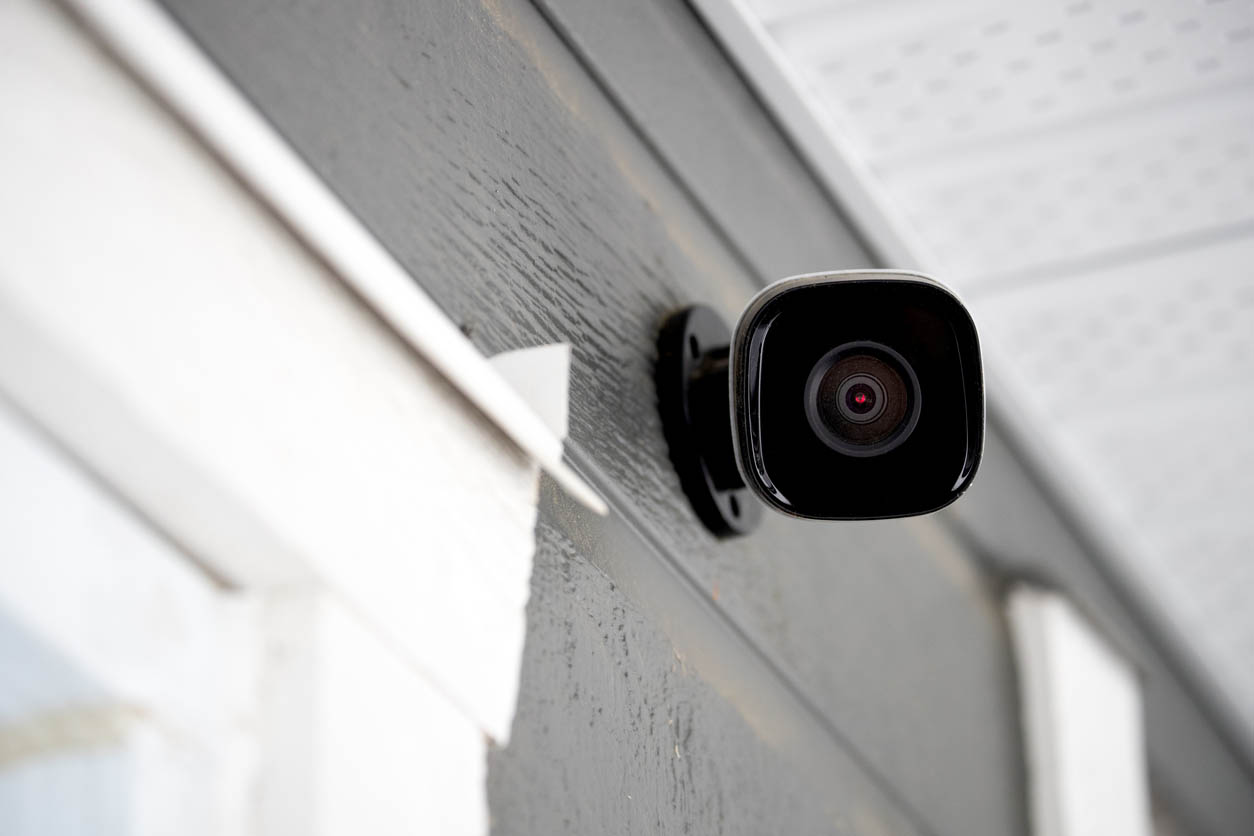
DIY security systems can be tailored to fit one’s needs.
A home security system is worth it only if it meets a home’s unique needs. One of the greatest benefits of a DIY system is the ability to customize. For customers whose primary security concern is car theft, all that may be needed is a motion-sensor light and a well-placed camera focused on the driveway. Others may have an escape-artist toddler (or teenager) and want to prioritize being notified when a door or window opens, but don’t need to alert authorities every time that happens. Others may be able to sleep only when they know that every door and window is equipped with an alarm and that cameras will immediately record anyone who may pose a threat to their home, which requires a complete and complex system.
Customers will also appreciate that they can expand their system at any time without having to start from scratch. If it turns out that the original system did not provide adequate coverage, it’s easy to go online and order additional equipment that can be synced with the existing hub. This also helps to mitigate the cost of the system—customers can pay gradually as they add new equipment to their setups.
Those who travel frequently may choose a fully integrated smart-home system that turns the lights and televisions on and off at various intervals and offers monitoring of the entries, smoke detectors, and premises. All of these are options with a DIY system: Customers can choose the number and location of their sensors, lighting, and cameras, and determine whether they prefer professional or self-monitoring.
ADT systems can make you and your family feel safe and secure with top-of-the-line equipment. View ADT systems and prices.
Many DIY security systems come with preprogrammed equipment.
The ability to individually select the components of a DIY system is a huge perk, but some customers may be overwhelmed by the sheer number of options that can seem too complicated to install.
A preprogrammed system can alleviate the stress involved in designing a whole system—a box arrives with a central hub and components that are truly plug-and-play. The components (which can include glass-break monitors, door and window alarms, a security camera, smart-home components, and fire and flood monitoring) are already connected to the hub, so all the customer needs to do is attach the sensors and cameras, turn everything on, and sign into Wi-Fi from the hub. Once set up, everything will automatically connect and work together without external input. Simple and easy to select and install, this is a great option for those who don’t need or want to know the intricate details of setting up a networked system.
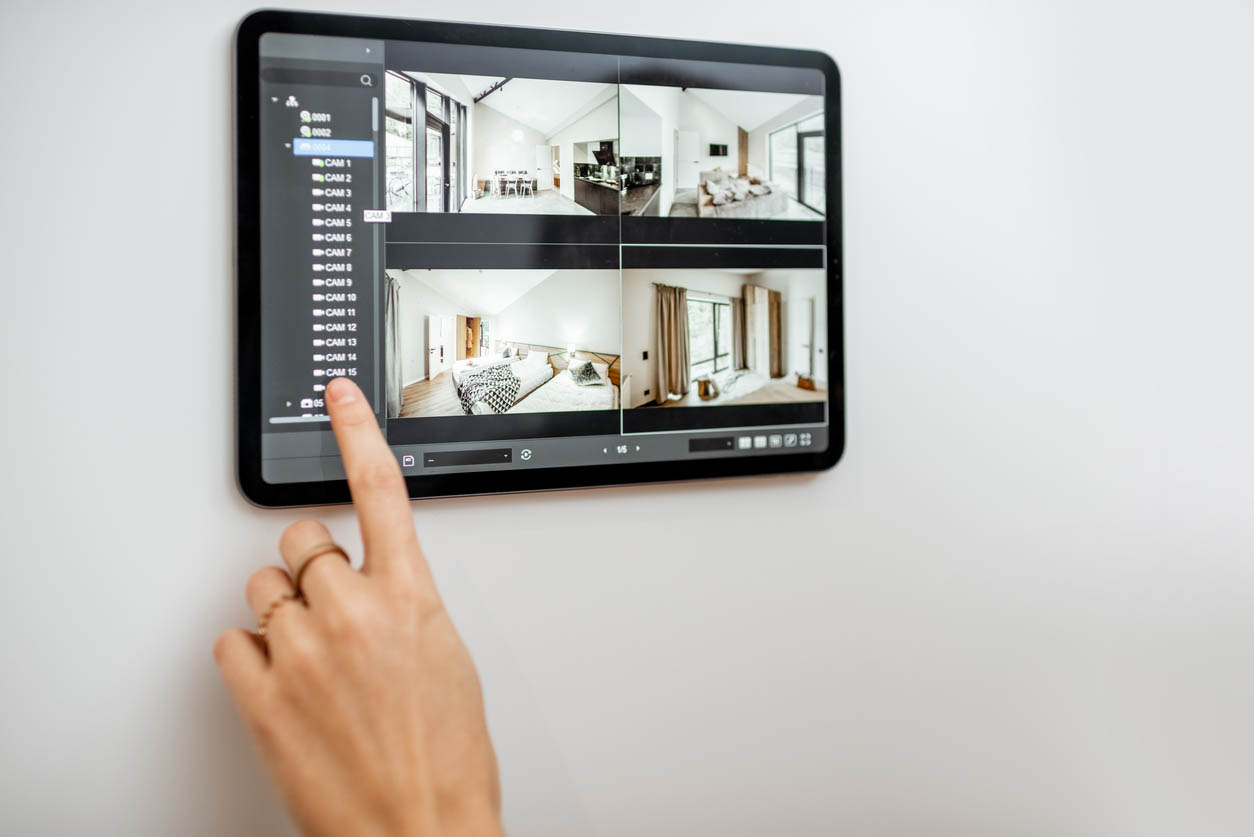
DIY security systems often come in convenient packages to help buyers choose the desired level of coverage.
Once customers start looking at the available options, it can be easy to keep adding more and more equipment to their cart—from cameras to smoke detectors to various types of window alarm sensors. Not all components of a security system are necessary or desirable for every customer. Someone who lives in a building with a centralized smoke detector and sprinkler system doesn’t need to add a connected smoke detector to their system. For a customer whose garage isn’t connected to the home and doesn’t contain equipment or gear they’re worried about losing, an additional garage door sensor may be unnecessary.
Some people are thrilled about the option of smart locks and smart lights and appliances—a true smart-home experience—but others feel that approach is intrusive and would rather avoid it. Most DIY security systems will allow the customer to choose whatever equipment they’d like, but they offer packages that contain the elements needed for different levels of coverage to make it easier to choose and purchase. Customers can also typically build their own packages if the available options aren’t a good fit for their home. Components can be added a la carte, but choosing one of the packages will streamline purchase and installation.
Frontpoint protects your home in an emergency, whether it’s a break-in, fire, medical emergency, and more. View Frontpoint products.
DIY security systems aren’t for everyone, but there are many pros in going the DIY route.
Installing a home security system is one of the best ways to burglar-proof a home. Those who are sure they prefer professional monitoring, are uncomfortable with the DIY installation, or are leery about connecting the equipment to their Wi-Fi and making the various connections on their own may find a professionally installed system more reassuring. On the other hand, DIY systems may be the best choice for many homeowners and renters. A DIY security system saves the hassle of scheduling installers to come to the home, allows for full customization of the placement of the components, offers the options of monitored or unmonitored security, and is transferable from one home to another. Because they aren’t wired or screwed into walls, they also make some of the best apartment security systems. It’s certainly worth investigating to see if one of the best DIY home security systems is the right fit; a DIY security system is a cost-effective, customizable option for many people.

